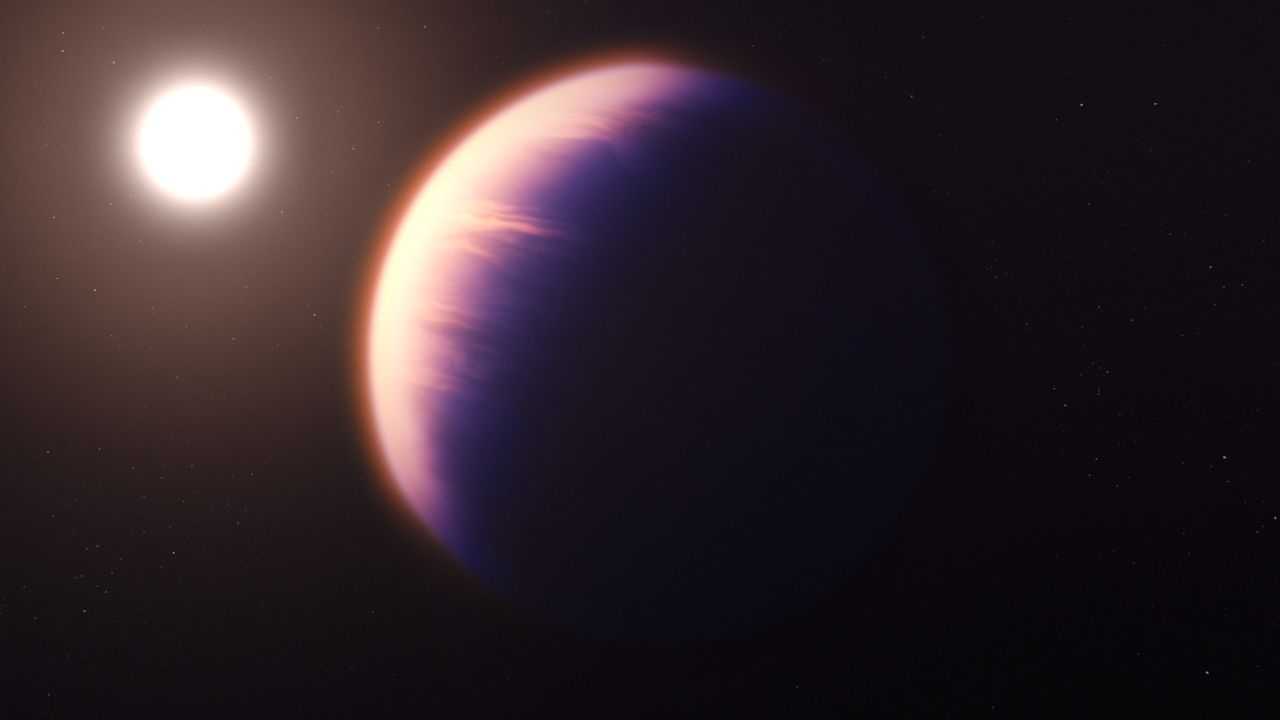The search for extraterrestrial life is heating up

Image: NASA/ESA/CSA/J. Olmsted
NASA’s James Webb Space Telescope has captured the first clear evidence of carbon dioxide in the atmosphere of a planet outside our solar system, per new research accepted for publication in Nature.
🪐 More deets… The exoplanet, called “WASP-39b,” is a gas giant orbiting a sunlike star 700 light-years from Earth. And while seasonal variations in carbon dioxide represent a “powerful indicator of the presence of life,” per NASA, we probably won’t find aliens here. Surface temps consistently average around 1,600°F, making it… shall we say, *difficult* to sustain life (plus seasonal variations in CO2 are generally hard to detect).
But, but, but – the recent finding does offer evidence that, in the future, Webb may be able to detect and measure carbon dioxide in smaller rocky planets more similar to Earth.
🌊🔭 Speaking of… An international team of astronomers announced the discovery of a new ocean planet this week. And initial data shows the planet could potentially support life.
- Dubbed TOI-1452b, it’s made up of 30% water by mass. It’s also located at a distance from its star where surface temps would be ideal for liquid water (0°C–100°C).
The researchers’ next step? Sending Mr. Webb on an errand, aka pointing it at the planet.
Stay tuned.
Share this!
Recent Science & Emerging Tech stories

Science & Emerging Tech
| August 25, 2022@DeepBinanceExec
💻 The chief communications officer at Binance, the world’s largest crypto exchange, says that scammers successfully created a deepfake of him to trick contacts into taking virtual meetings.

Science & Emerging Tech
| August 24, 2022A PSA about ISA
🚗🗽 NYC recently announced a test run of new intelligent speed assistance (ISA) technology that makes your car obey the speed limit; the software is also being mandated across all vehicles sold in the EU starting in 2024.

Science & Emerging Tech
| August 24, 2022I’m not crying, you’re crying
🐶💦 Pet dogs’ eyes are filled with tears of happiness when they’re reunited with their owners, according to new peer-reviewed research that, if true, would represent the first evidence of emotional crying in nonhuman animals.
You've made it this far...
Let's make our relationship official, no 💍 or elaborate proposal required. Learn and stay entertained, for free.👇
All of our news is 100% free and you can unsubscribe anytime; the quiz takes ~10 seconds to complete